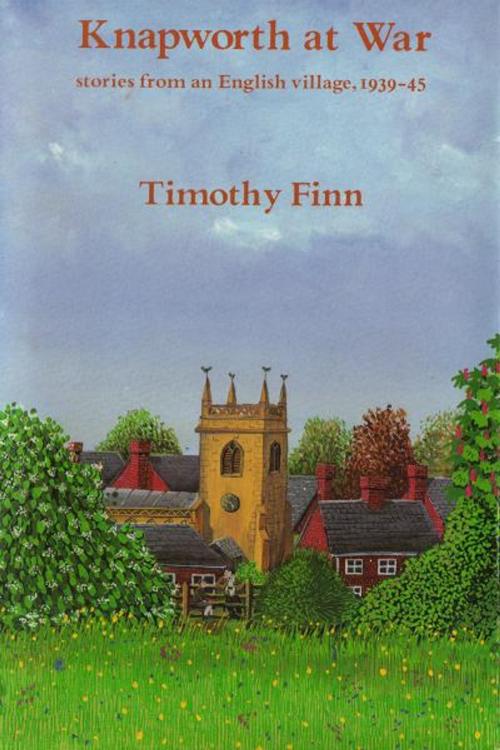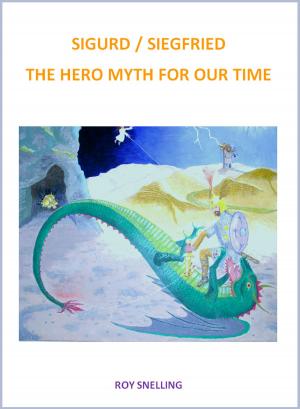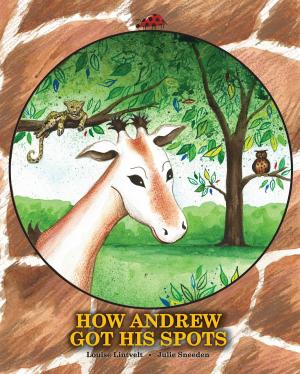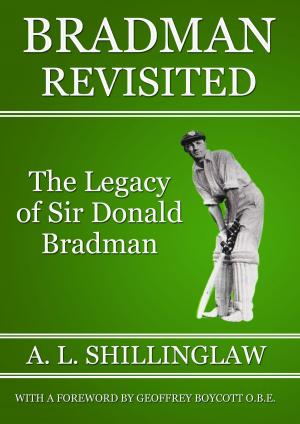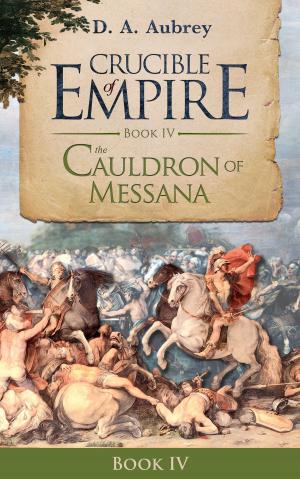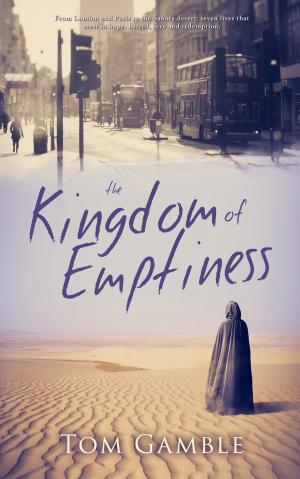| Author: | Timothy Finn | ISBN: | 9781908886125 |
| Publisher: | eBookpartnership.com | Publication: | December 20, 2011 |
| Imprint: | eBookpartnership.com | Language: | English |
| Author: | Timothy Finn |
| ISBN: | 9781908886125 |
| Publisher: | eBookpartnership.com |
| Publication: | December 20, 2011 |
| Imprint: | eBookpartnership.com |
| Language: | English |
REVIEWS - Knapworth at War published by Duckworth 1982
Times Education Supplement - This is a good bedside book, a seductive medley of autobiography, nostalgic reminiscencies, and glimpses of a rural way of life which, while not yet extinct, is becoming rarer every year. The jacket design by Shoo Rayner is delightful.
James Herriot - I laughed out loud at the account of the prisoners of war. It struck a chord because I have many memories of prisoners in our own community and the picture of German prisoners trooping in for their vast meal of eggs and bacon was one which could have been seen all over Yorkshire in those days. I do love the quiet humour.
Sunday Telegraph - An entertaining account of wartime rural life which is strong on characters. There is a perceptive piece showing the difference between Italian and German prisoners-of-war. Timothy Finn has an elegant and humorous writing style.
- - -
How did the Leicestershire village of Knapworth, numbering sixty souls, face up to the 1939 - 45 war? In much the same phlegmatic way that it had faced most other national crises in the one thousand years of its existence.
After all, at the time of the accession of Edward VIII some years before the war, the villagers planted a small oak sapling in Mostley field, fenced it around with railings, then screwed up a modest plaque to explain to the sheep and cows who might stand around it in later years that it was put up in commemoration of the accession of His Majesty King Edward VIII. A year later, with the abdication behind them and a new monarch on the throne. they unscrewed the plaque and added the immortal line ALSO GEORGE VI and screwed it back again. Knapworth was getting a bit browned off with coronations.
Not that the villagers were indifferent in wartime to the world outside but it was important to get their priorities right. Against the distant chances of a foreign invasion had to be set the grim certainty that the Bishop was coming for evensong to bless the churchyard wall, a wall that had not yet been built. Knapworth had no more than its share of village eccentrics like Fred Quoyles the wily farmer who marooned the Men from the Ministry on a hay-rick, Riddle the local layabout who deserted his post as Home Guard watchman for the warmth of the Finns kitchen range, Uncle Hugh, arrested as an enemy alien for quoting Latin verse and Adam the gypsy and his faithful dog Bulger who lived in an ex-army tent in the copse.
Knapworths remote position didnt keep it completely safe from bombing raids. On the night of the bombing of Coventry a German plane returning to base jettisoned its final bomb in the area. Despite a search at first light there was no sign of the bomb in the village or its surrounds. We boys found the bomb-crater three days later while mushroom-hunting. On the sloping side of a small field was a great cone-shaped hole, thirty feet across, which had been punched into the ground as though by an enormous mechanical stamp. The sides were steep and we had to lie on our tummies in the loose earth to peer over the edge. There was a mad skelter home through hedges and over fences, even across the corner of the large square field where Fred Quoyles bull presided over his placid herd of cows in a state of permanent indignation. We shouted our news out to people in the gardens as we tore through the village. And wonder of wonders we were so important for that hour that Arnold Stackyard put down his yoke and his water-pails and took us into his farmhouse and gave us a slab of toffee by the fire while he sat down in his braces at the kitchen table and painstakingly wrote a long report.
Timothy Finn writes with affectionate humour about his childhood, family and neighbours. You wont find Knapworth, or Mostley on any map of Leicestershire but theyre there, in disguise, and immortalised in this nostalgic evocation of a simpler more innocent time which casts a binding spell on readers today.
Times Education Supplement - This is a good bedside book, a seductive medley of autobiography, nostalgic reminiscencies, and glimpses of a rural way of life which, while not yet extinct, is becoming rarer every year. The jacket design by Shoo Rayner is delightful.
James Herriot - I laughed out loud at the account of the prisoners of war. It struck a chord because I have many memories of prisoners in our own community and the picture of German prisoners trooping in for their vast meal of eggs and bacon was one which could have been seen all over Yorkshire in those days. I do love the quiet humour.
Sunday Telegraph - An entertaining account of wartime rural life which is strong on characters. There is a perceptive piece showing the difference between Italian and German prisoners-of-war. Timothy Finn has an elegant and humorous writing style.
- - -
How did the Leicestershire village of Knapworth, numbering sixty souls, face up to the 1939 - 45 war? In much the same phlegmatic way that it had faced most other national crises in the one thousand years of its existence.
After all, at the time of the accession of Edward VIII some years before the war, the villagers planted a small oak sapling in Mostley field, fenced it around with railings, then screwed up a modest plaque to explain to the sheep and cows who might stand around it in later years that it was put up in commemoration of the accession of His Majesty King Edward VIII. A year later, with the abdication behind them and a new monarch on the throne. they unscrewed the plaque and added the immortal line ALSO GEORGE VI and screwed it back again. Knapworth was getting a bit browned off with coronations.
Not that the villagers were indifferent in wartime to the world outside but it was important to get their priorities right. Against the distant chances of a foreign invasion had to be set the grim certainty that the Bishop was coming for evensong to bless the churchyard wall, a wall that had not yet been built. Knapworth had no more than its share of village eccentrics like Fred Quoyles the wily farmer who marooned the Men from the Ministry on a hay-rick, Riddle the local layabout who deserted his post as Home Guard watchman for the warmth of the Finns kitchen range, Uncle Hugh, arrested as an enemy alien for quoting Latin verse and Adam the gypsy and his faithful dog Bulger who lived in an ex-army tent in the copse.
Knapworths remote position didnt keep it completely safe from bombing raids. On the night of the bombing of Coventry a German plane returning to base jettisoned its final bomb in the area. Despite a search at first light there was no sign of the bomb in the village or its surrounds. We boys found the bomb-crater three days later while mushroom-hunting. On the sloping side of a small field was a great cone-shaped hole, thirty feet across, which had been punched into the ground as though by an enormous mechanical stamp. The sides were steep and we had to lie on our tummies in the loose earth to peer over the edge. There was a mad skelter home through hedges and over fences, even across the corner of the large square field where Fred Quoyles bull presided over his placid herd of cows in a state of permanent indignation. We shouted our news out to people in the gardens as we tore through the village. And wonder of wonders we were so important for that hour that Arnold Stackyard put down his yoke and his water-pails and took us into his farmhouse and gave us a slab of toffee by the fire while he sat down in his braces at the kitchen table and painstakingly wrote a long report.
Timothy Finn writes with affectionate humour about his childhood, family and neighbours. You wont find Knapworth, or Mostley on any map of Leicestershire but theyre there, in disguise, and immortalised in this nostalgic evocation of a simpler more innocent time which casts a binding spell on readers today.
REVIEWS - Knapworth at War published by Duckworth 1982
Times Education Supplement - This is a good bedside book, a seductive medley of autobiography, nostalgic reminiscencies, and glimpses of a rural way of life which, while not yet extinct, is becoming rarer every year. The jacket design by Shoo Rayner is delightful.
James Herriot - I laughed out loud at the account of the prisoners of war. It struck a chord because I have many memories of prisoners in our own community and the picture of German prisoners trooping in for their vast meal of eggs and bacon was one which could have been seen all over Yorkshire in those days. I do love the quiet humour.
Sunday Telegraph - An entertaining account of wartime rural life which is strong on characters. There is a perceptive piece showing the difference between Italian and German prisoners-of-war. Timothy Finn has an elegant and humorous writing style.
- - -
How did the Leicestershire village of Knapworth, numbering sixty souls, face up to the 1939 - 45 war? In much the same phlegmatic way that it had faced most other national crises in the one thousand years of its existence.
After all, at the time of the accession of Edward VIII some years before the war, the villagers planted a small oak sapling in Mostley field, fenced it around with railings, then screwed up a modest plaque to explain to the sheep and cows who might stand around it in later years that it was put up in commemoration of the accession of His Majesty King Edward VIII. A year later, with the abdication behind them and a new monarch on the throne. they unscrewed the plaque and added the immortal line ALSO GEORGE VI and screwed it back again. Knapworth was getting a bit browned off with coronations.
Not that the villagers were indifferent in wartime to the world outside but it was important to get their priorities right. Against the distant chances of a foreign invasion had to be set the grim certainty that the Bishop was coming for evensong to bless the churchyard wall, a wall that had not yet been built. Knapworth had no more than its share of village eccentrics like Fred Quoyles the wily farmer who marooned the Men from the Ministry on a hay-rick, Riddle the local layabout who deserted his post as Home Guard watchman for the warmth of the Finns kitchen range, Uncle Hugh, arrested as an enemy alien for quoting Latin verse and Adam the gypsy and his faithful dog Bulger who lived in an ex-army tent in the copse.
Knapworths remote position didnt keep it completely safe from bombing raids. On the night of the bombing of Coventry a German plane returning to base jettisoned its final bomb in the area. Despite a search at first light there was no sign of the bomb in the village or its surrounds. We boys found the bomb-crater three days later while mushroom-hunting. On the sloping side of a small field was a great cone-shaped hole, thirty feet across, which had been punched into the ground as though by an enormous mechanical stamp. The sides were steep and we had to lie on our tummies in the loose earth to peer over the edge. There was a mad skelter home through hedges and over fences, even across the corner of the large square field where Fred Quoyles bull presided over his placid herd of cows in a state of permanent indignation. We shouted our news out to people in the gardens as we tore through the village. And wonder of wonders we were so important for that hour that Arnold Stackyard put down his yoke and his water-pails and took us into his farmhouse and gave us a slab of toffee by the fire while he sat down in his braces at the kitchen table and painstakingly wrote a long report.
Timothy Finn writes with affectionate humour about his childhood, family and neighbours. You wont find Knapworth, or Mostley on any map of Leicestershire but theyre there, in disguise, and immortalised in this nostalgic evocation of a simpler more innocent time which casts a binding spell on readers today.
Times Education Supplement - This is a good bedside book, a seductive medley of autobiography, nostalgic reminiscencies, and glimpses of a rural way of life which, while not yet extinct, is becoming rarer every year. The jacket design by Shoo Rayner is delightful.
James Herriot - I laughed out loud at the account of the prisoners of war. It struck a chord because I have many memories of prisoners in our own community and the picture of German prisoners trooping in for their vast meal of eggs and bacon was one which could have been seen all over Yorkshire in those days. I do love the quiet humour.
Sunday Telegraph - An entertaining account of wartime rural life which is strong on characters. There is a perceptive piece showing the difference between Italian and German prisoners-of-war. Timothy Finn has an elegant and humorous writing style.
- - -
How did the Leicestershire village of Knapworth, numbering sixty souls, face up to the 1939 - 45 war? In much the same phlegmatic way that it had faced most other national crises in the one thousand years of its existence.
After all, at the time of the accession of Edward VIII some years before the war, the villagers planted a small oak sapling in Mostley field, fenced it around with railings, then screwed up a modest plaque to explain to the sheep and cows who might stand around it in later years that it was put up in commemoration of the accession of His Majesty King Edward VIII. A year later, with the abdication behind them and a new monarch on the throne. they unscrewed the plaque and added the immortal line ALSO GEORGE VI and screwed it back again. Knapworth was getting a bit browned off with coronations.
Not that the villagers were indifferent in wartime to the world outside but it was important to get their priorities right. Against the distant chances of a foreign invasion had to be set the grim certainty that the Bishop was coming for evensong to bless the churchyard wall, a wall that had not yet been built. Knapworth had no more than its share of village eccentrics like Fred Quoyles the wily farmer who marooned the Men from the Ministry on a hay-rick, Riddle the local layabout who deserted his post as Home Guard watchman for the warmth of the Finns kitchen range, Uncle Hugh, arrested as an enemy alien for quoting Latin verse and Adam the gypsy and his faithful dog Bulger who lived in an ex-army tent in the copse.
Knapworths remote position didnt keep it completely safe from bombing raids. On the night of the bombing of Coventry a German plane returning to base jettisoned its final bomb in the area. Despite a search at first light there was no sign of the bomb in the village or its surrounds. We boys found the bomb-crater three days later while mushroom-hunting. On the sloping side of a small field was a great cone-shaped hole, thirty feet across, which had been punched into the ground as though by an enormous mechanical stamp. The sides were steep and we had to lie on our tummies in the loose earth to peer over the edge. There was a mad skelter home through hedges and over fences, even across the corner of the large square field where Fred Quoyles bull presided over his placid herd of cows in a state of permanent indignation. We shouted our news out to people in the gardens as we tore through the village. And wonder of wonders we were so important for that hour that Arnold Stackyard put down his yoke and his water-pails and took us into his farmhouse and gave us a slab of toffee by the fire while he sat down in his braces at the kitchen table and painstakingly wrote a long report.
Timothy Finn writes with affectionate humour about his childhood, family and neighbours. You wont find Knapworth, or Mostley on any map of Leicestershire but theyre there, in disguise, and immortalised in this nostalgic evocation of a simpler more innocent time which casts a binding spell on readers today.
